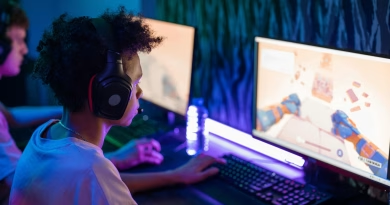Vibe Coding: The Future of Software Development?
Software development is undergoing its biggest identity shift since the invention of the IDE. And if you haven’t heard of “vibe coding” yet, buckle up—because this Silicon Valley-born concept might just redefine what it means to “write code.”
Coined and popularized by Andrej Karpathy, co-founder of OpenAI and one of the leading minds behind modern AI, vibe coding refers to a new paradigm where you no longer code line by line—instead, you collaborate with AI models that generate, debug, and improve code based on natural language commands, visual cues, or even vibes. Yes, vibes.
So what does that really mean? And are we heading toward a future where coding becomes less about syntax and more about intuition?
Let’s unpack this.
What is Vibe Coding—Really?
Imagine this: you open your laptop, fire up a code editor powered by a smart assistant (maybe GPT-4o or an even smarter GPT-5), and simply type:
“Build a simple web app with a form that collects user emails and stores them in a Google Sheet. Keep the design clean and modern.”
Within seconds, the AI generates a working app scaffold. You want to tweak the form layout? You just say it. Need to integrate with Mailchimp? You paste the error you got last time—it fixes it for you.
That’s vibe coding.
It’s not about writing for the machine. It’s about describing intent and letting the machine interpret, execute, and refine it. The developer becomes more of a director than a builder, guiding AI tools to achieve the desired outcome through collaborative iteration.
Why Silicon Valley is Buzzing About It
Vibe coding didn’t come out of nowhere. It’s the natural next step in a progression that includes:
- GitHub Copilot’s autocomplete and suggestion features
- ChatGPT-based code explanations and debugging
- Voice-driven IDE plugins
- AutoGPT and Devin-like agents that can code end-to-end projects
But what makes vibe coding different is its philosophy. It’s not about efficiency alone. It’s about fluidity, exploration, and removing friction.
Developers in Silicon Valley—and increasingly beyond—are embracing this idea for two key reasons:
- It dramatically lowers the barrier to experimentation.
Instead of spending an hour Googling the right npm package, you just ask the AI and see what happens. - It shifts the creative energy.
Coding becomes less about mechanics and more about conceptual thinking. The developer focuses on what the product should feel like, not how to make it run.
Why It’s Not Just Hype
Skeptics might roll their eyes and say this is just fancy autocomplete. But that’s like calling Midjourney “just Photoshop.”
Vibe coding is more than a tool—it’s a workflow shift. In the same way low-code/no-code platforms empowered non-developers, vibe coding is empowering developers to move faster with fewer blockers. It’s also:
- Improving debugging (with contextual understanding of entire projects)
- Accelerating prototyping (especially in startups and hackathons)
- Enabling cross-functional roles (e.g., designers contributing logic through prompts)
And it’s not just juniors who benefit. Senior engineers are using vibe coding to offload repetitive tasks and focus on architecture, security, and logic optimization.
But Let’s Talk Risks
Like any tech buzzword, vibe coding has its caveats.
- Loss of depth: Relying too heavily on AI might erode foundational knowledge over time. If you don’t know what the AI is doing under the hood, you’re flying blind.
- Debugging black boxes: Sometimes, the AI spits out code that works—but no one knows why. That’s a liability, not a feature.
- Security and quality: AI-generated code isn’t always optimized, secure, or compliant. Manual reviews are still essential, especially in regulated industries.
Vibe coding doesn’t mean abandoning engineering principles. It means augmenting them—so long as developers stay engaged in the decision-making loop.
So… Is This the Future of Coding?
Here’s the thing: vibe coding won’t replace traditional coding entirely. Not yet. But it will become a dominant mode of prototyping, iterating, and teaching.
Much like how Photoshop didn’t kill illustration—but transformed it—vibe coding won’t kill development. It will expand who gets to participate in the process. It will speed up the boring stuff and make space for more creativity.
In five years, it might be weird to open a blank IDE without a co-pilot. And maybe that’s not a bad thing.
What It Means for the Next Gen of Developers
For students, hobbyists, and no-code founders, vibe coding is the ultimate gateway drug into software creation. You no longer need to master every syntax tree to build something meaningful. You just need clear intent and a willingness to learn by doing.
But here’s my advice: Don’t skip the fundamentals. Let AI help you build—but stay sharp enough to know when something’s off.
Because even in the age of vibe coding, the best developers will be those who know how to collaborate—with both humans and machines.




